The choices a curator makes – which artists to feature, how many to feature and what to name the exhibition – are often as fascinating as the exhibition itself.
Inside the mind of Somewhere in Between’s curator, Laurie Britton Newell
Words by Gwendolyn Smith
- Interview
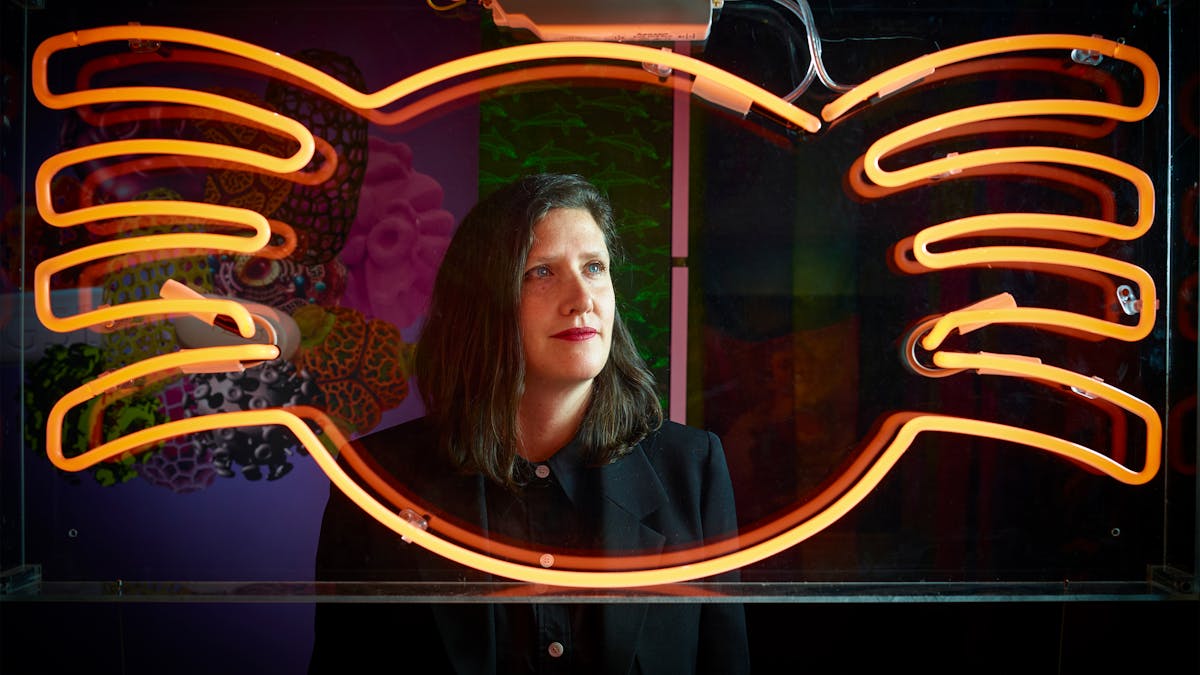
The title of the Wellcome Collection’s major spring exhibition is a joke. Not in the sense of something to be laughed at, oh no.
Rather, it’s a tongue-in-cheek nod to the bad press attracted by sci-art, the movement which aims to engage audiences with science through art and a term that could be used to describe the show, Somewhere in Between, seeing as it presents artworks made in collaboration with scientists and their teams.
“Sci-art is criticised for diluting subjects and creating something watered down, that’s somewhere in between. That was the cheeky reference I wanted to make,” says curator Laurie Britton Newell, with a sheepish laugh.
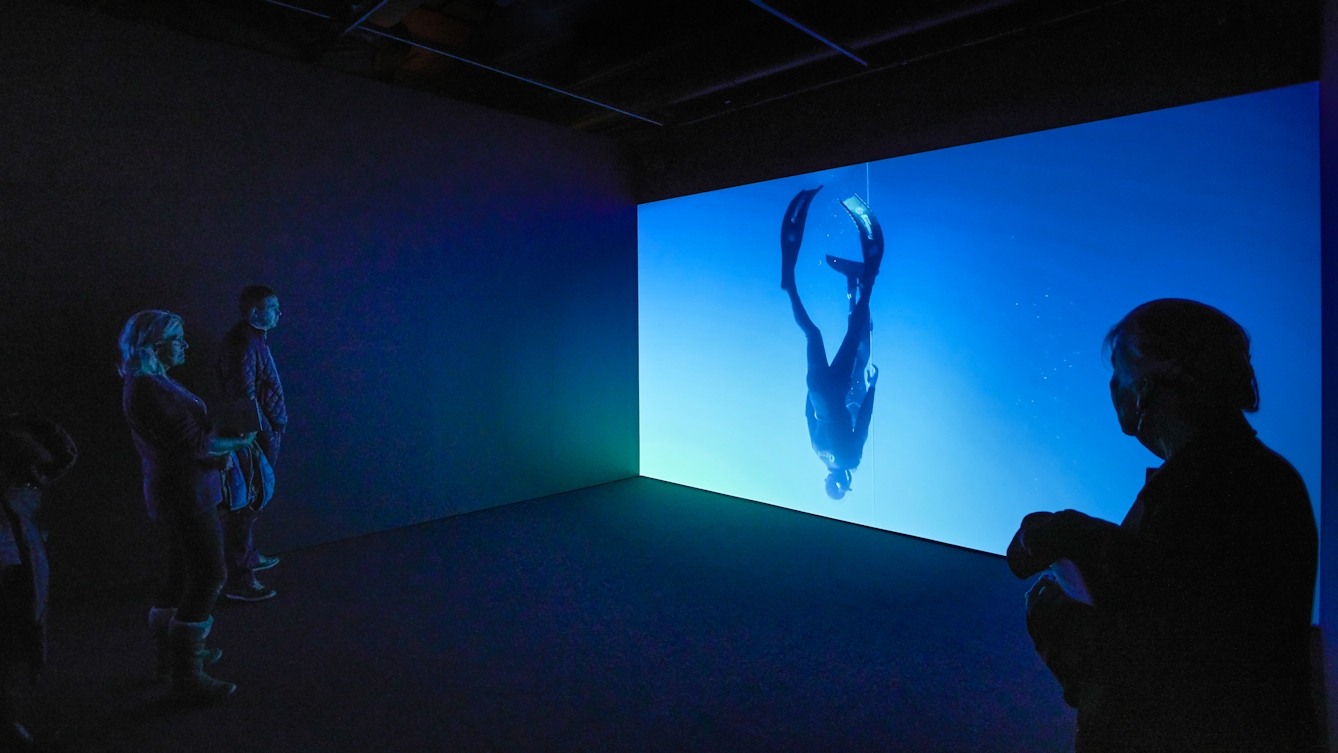
“Art happens in the public sphere and science’s place is behind closed doors,” says Britton Newell. “So when they come together they can open ideas and raise questions.”
While Britton Newell doesn’t buy into the pejorative connotations of the word, she suggests that instead of resorting to labels the exhibition should be seen as something that showcases the vast potential of marrying two different disciplines. “Art happens in the public sphere and science’s place is behind closed doors,” she says. “So when they come together they can open ideas and pose some unanswered questions.”
Somewhere in Between certainly does that. Comprising four works, it uses the visual arts to interrogate a thrillingly diverse range of healthcare research. Maria McKinney’s photography-based ‘Sire’ explores genetic engineering in cattle breeding, while John Walter’s ‘Alien Sex Club’ considers contemporary attitudes towards HIV.
The show’s two film pieces see, in turn, Martina Amati submerge visitors in the physiological mystery of freediving and Daria Martin delve into the discomfiting sensation of mirror-touch synaesthesia.
Works were selected from a pool of past winners of the Wellcome Trust’s arts awards. This contained more than a decade’s worth of victors: how did Britton Newell choose from such a hefty range?
“I ended up gravitating towards some of the more recent projects. I was looking for timely pieces – work on subjects that would have strong resonance with audiences now and that would pose so far unanswered questions.”
And why just four? “I was keen for there not to be too many works. I wanted to give each piece time, space and energy and to unpick the ideas behind each of them.” Size was also a determinant: “I gravitated towards the larger-scale projects so that they could really occupy the footprint of the gallery.”
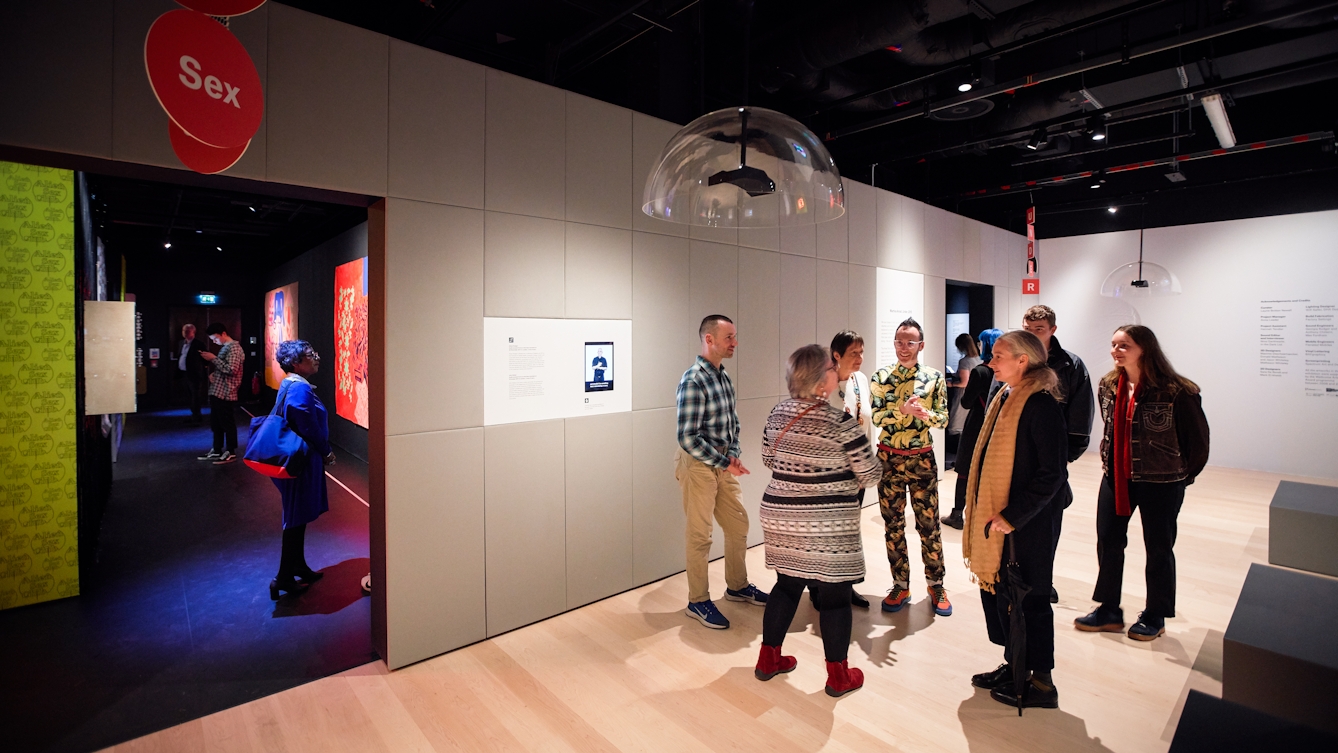
The four rooms containing the artworks lead off through four separate doorways from the central foyer, which Britton Newell says functions as both a “palate cleanser” and as a “digestive space”.
Hidden systems
Given that the subjects dealt with are, on the face of it at least, poles apart, one of the greatest challenges of putting together Somewhere in Between was coming up with a unifying theme.
But Britton Newell can put her finger on the common thread. “On a simple level, it’s about how the artworks draw visitors into four areas of contemporary scientific research. But the more poetic theme is the exhibition trying to reveal hidden systems and intangible connections. It's about giving physical form to experiences that are a mystery to many of us.”
For instance, the synaesthesia films, she says, enable viewers to momentarily inhabit a realm of sensation that most people will never experience. Similarly, the bovine portraits of ‘Sire’ illuminate the genetic code that is bound into the meat and milk we consume. Walter’s interactive sex club maze on HIV engages with an issue “we’ve all heard about but not looked at in that way”. And Martina’s piece sheds light on a murky underwater world.
Unlike the way some exhibitions funnel visitors through a rigid, linear route, there’s no clear path at Somewhere in Between; the four rooms containing the artworks lead off through four separate doorways from the central foyer, which Britton Newell says functions as both a “palate cleanser” and as a “digestive space”.
That’s not to say no thought has gone into the layout. “Working alongside the exhibition designers Matheson Whitely, we wanted to break up the different types of experience, ensuring the physical and three-dimensional experiences sandwiched the film pieces,” says Britton Newell. None of the artists get to dominate the space, either. “Although most visitors will turn left when they enter the show, there’s no hierarchy in how we’ve laid it out.”
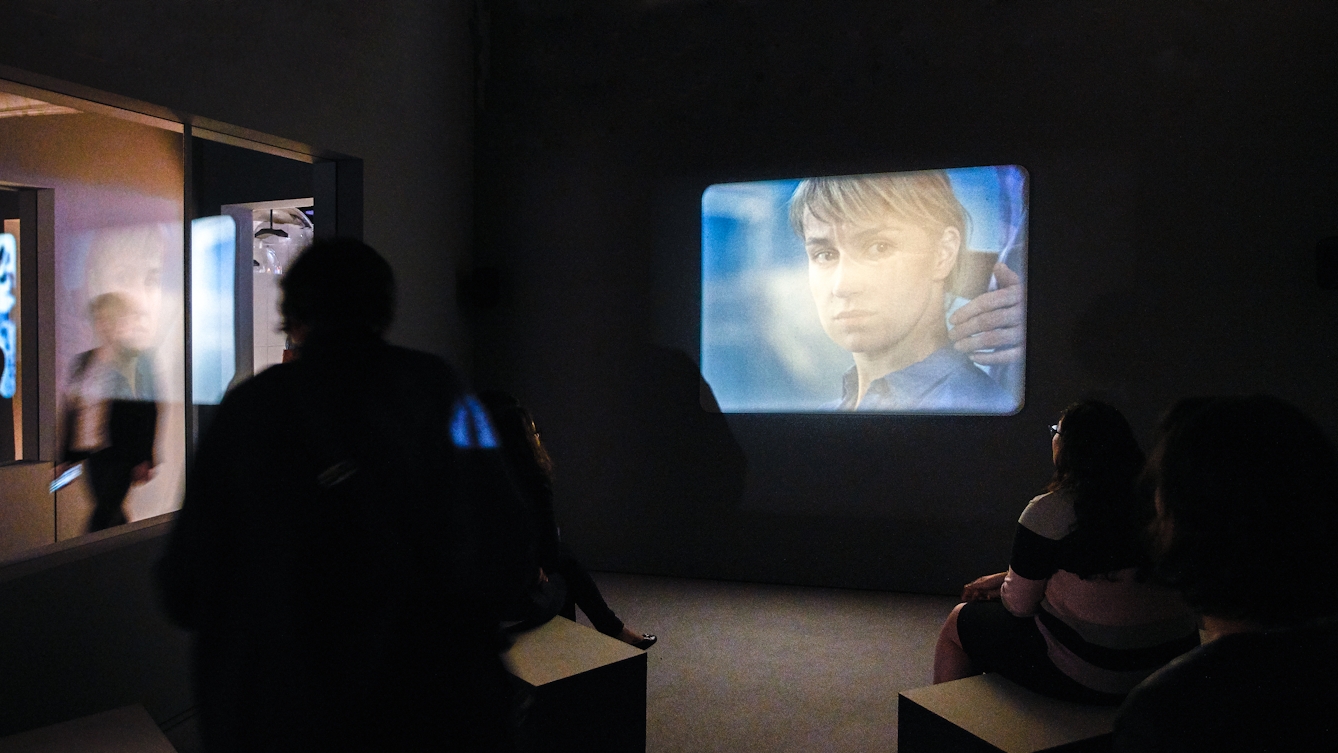
Curators and artists often work together to find new ways of presenting an artwork. Britton Newell and Daria Martin came up with the two-way mirror at the end of the corridor leading to 'At the Threshold' and 'Sensorium Tests'.
Immersive interventions
Collaboration and interdisciplinary curation has been a recurrent theme in Britton Newell’s career.
Before being appointed senior curator last summer at the Wellcome Trust, she worked freelance for four years in the US after a ten-year stint as curator of contemporary programmes at the V&A. There, Memory Palace was one show that (appropriately) sticks in the mind. In it, a new story by novelist Hari Kunzru was transformed into an immersive ‘walk-in’ book by illustrators, graphic designers and typographers.
Stateside, one show she worked on involved artists “creating interventions” in a historic gold mining village, with the aim of introducing diverse perspectives to the prevailing narrative of the area’s history.
Such experiences helped put her at ease in Somewhere in Between, her first Wellcome Collection gig – after all, she says, it’s another project concerned with “building bridges and taking audiences on a journey into unexpected realms.”
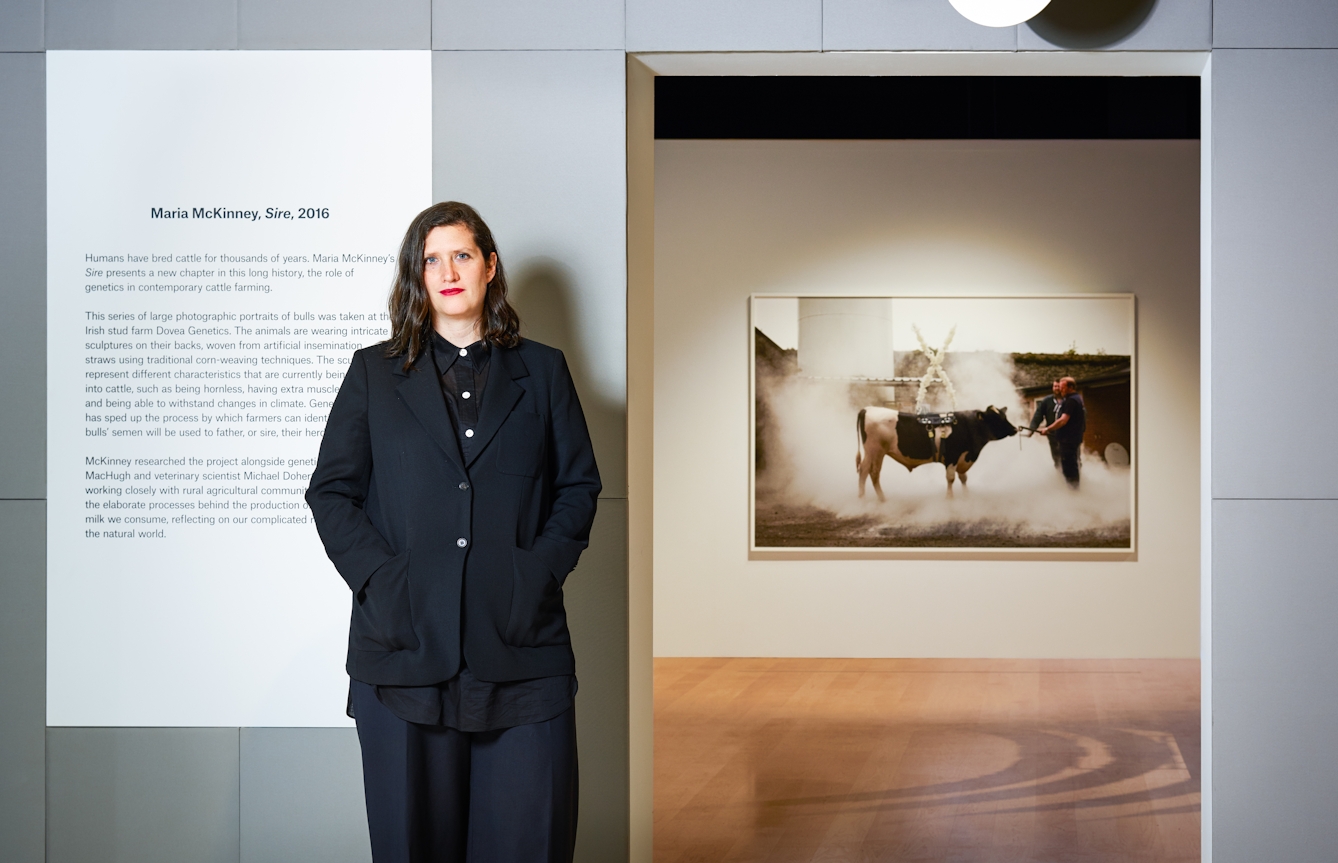
Britton Newell ensured that no single artist would dominate the space. “Although most visitors will turn left when they enter the show, there’s no hierarchy in how we’ve laid it out.”
Despite the fact that Britton Newell didn’t commission the Somewhere in Between installations from scratch, she had a hand in their current incarnations.
For example, she and Daria Martin came up with the two-way mirror that gleams at the end of the corridor leading to the synaesthesia spectacle. In order to convey “an ascent into something”, she masterminded another corridor adornment, too: the soundtrack of human breathing that plays in the inky-black passage to Martina Amati’s freediving films.
Indeed, all of the artworks have been tweaked, to varying degrees, for their Wellcome Collection outing.
Amati’s films had never been shown as a triptych before, despite having been originally conceived as such. “It was a good opportunity to see them in the format that they had been designed for, while simultaneously creating this intimate, slightly claustrophobic viewing experience,” says Britton Newell.
And this was the first time John Walter’s labyrinthine sex club had been shown “in a really solid exhibition way – beforehand he’s done it quite casually. The walls were made of card and quite shonky.”
After working on the exhibition for the past seven months, she’s now adamant that the gulf between science and art is not as cavernous as it’s commonly perceived to be. “To get your work tested through a different lens is something which all cutting edge art and science shares,” she says. “That’s where they meet each other in the middle.”
Somewhere in Between is open until 27 August 2018 at Wellcome Collection.
